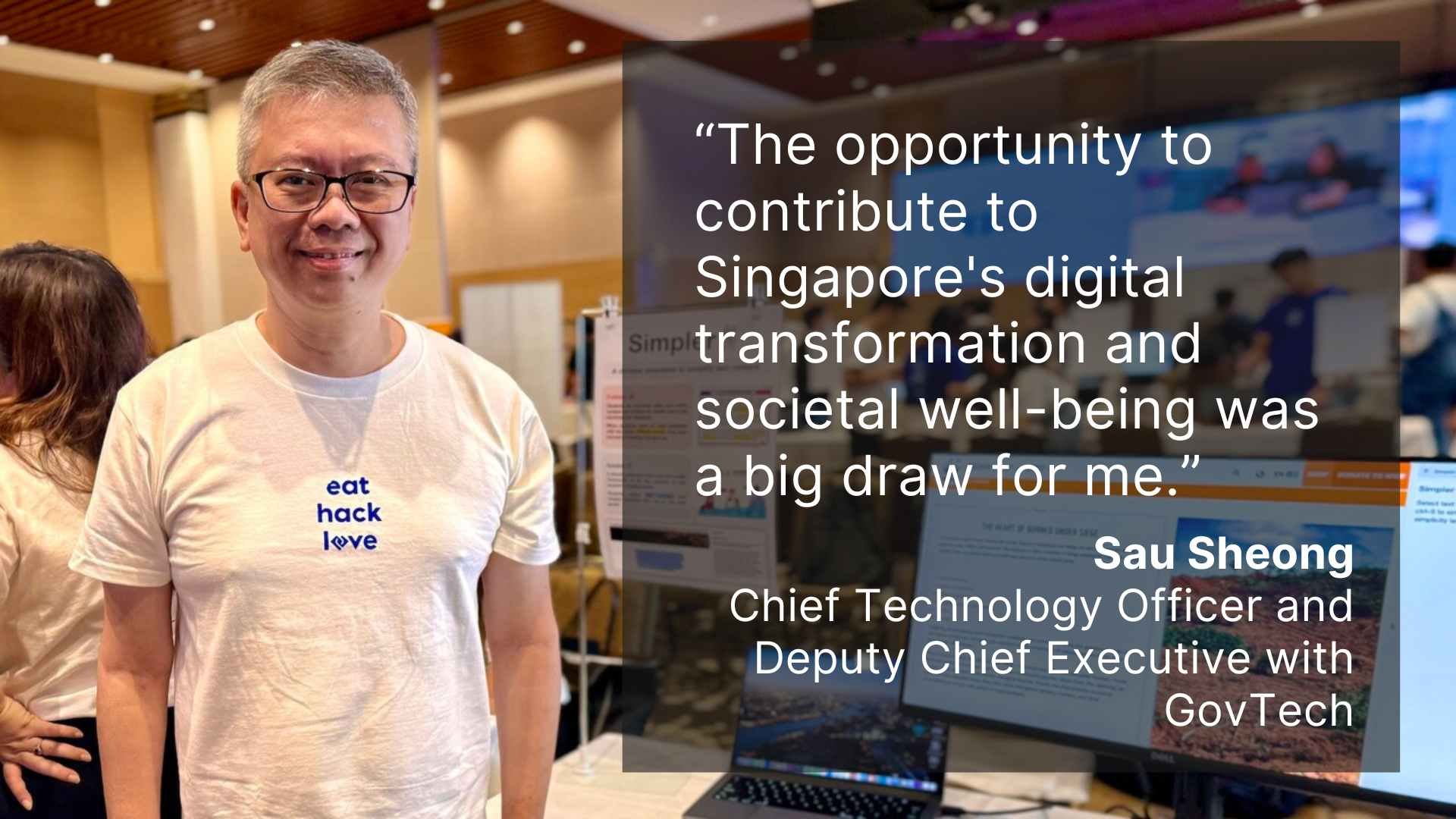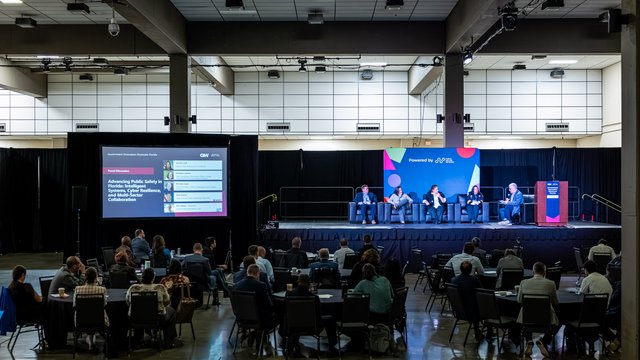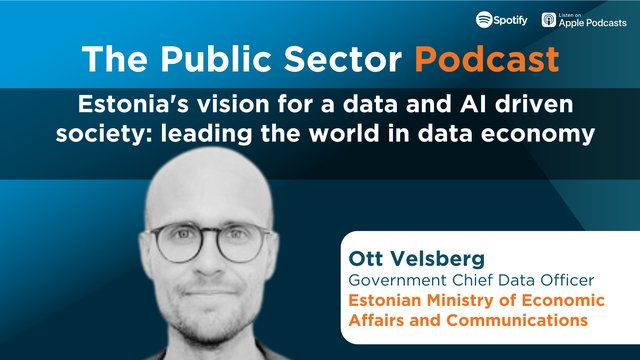
It has been more than a year now, since I embarked on my journey with GovTech. While this career path back to the public sector was not what I originally had in mind, I couldn't deny the call and chance to contribute to Singapore's Smart Nation initiatives. I want to share a bit of my journey so far, both the opportunities and challenges of a tech career in the public sector.
GovTech is the lead agency driving Singapore’s Smart Nation initiatives and public sector digital transformation and you might think it's a relatively new agency. While GovTech Singapore started in 2016, the journey to where GovTech is today started 43 years ago in 1981 as the National Computer Board (NCB).
Singapore was one of the first countries in the world to establish a government agency to promote computerisation and the development of the IT industry. Unsurprisingly, NCB's first task was to improve government operations and its services to the public, through the Civil Service Computerisation Programme (CSCP). Not many know, but I joined the NCB in the late 1990s and spent a couple of years in CSCP, before I left to found my first startup during the dotcom days.
Much later, I renewed my connection with GovTech when I served as a Smart Nation Fellow in 2017, advising the Whole-of-Government Application Analytics (WOGAA) which monitors real-time performance of government websites and digital services. This experience rekindled my interest in public service and provided me with the motivation to answer the call to join GovTech.
My motivation is rooted in a desire to make a meaningful impact.
What I wanted was make a meaningful impact. The opportunity to contribute to Singapore's digital transformation and societal well-being was a big draw for me. Technology decisions in GovTech have far-reaching impact, not only on me and my family but also to my friends and fellow Singaporeans. It's an amazing feeling when something comes up on TV or on the news about how a new government digital service is coming up to improve citizen's lives, I can tell my family: I was part of that. What I did mattered.
Singapore is a small island, but the scope of tech development is anything but limited. From essential platforms like Singpass for citizens to game-changing solutions such as GoBusiness for enterprises, the opportunity to shape the nation's growth and development has far exceeded my initial expectations.
For example, the Government on Commercial Cloud (GCC) programme is a critical platform that provides tangible and far-reaching impact to government digital services on a national scale. It empowers multiple agencies to advance government digital transformation and improve citizen and business services through cloud capabilities. This allows us to transcend the limitations of traditional systems and create a government that serves the needs of its citizens more quickly, securely, and at reduced costs.
Software engineers are creators and builders, and we are compelled to create and build.
Software engineers are creators and builders, and we are compelled to create and build. Naturally, we want to build systems that are meaningful and have an enduring impact on Singapore. As part of senior management, I don't always get to work on the code directly but still it's greatly satisfying that I am a multiplier. I get to focus our capabilities and people towards delivering the most optimal set of government digital services for public good. At the same time, I gained valuable insights into the organisation and operations of the government, satisfying my need for continuous learning and new experiences.
However, this doesn't mean I don't get to code either. For those of you who know me, I'm always the happiest in front of my computer, writing code. Occasionally I still get involved in hackathons, like during the Hack for Public Good in January 2024 where I participated in 3 hackathon projects simultaneously!
 Hack for Public Good Demo Day 2024
Hack for Public Good Demo Day 2024
In my role as the Chief Technology Officer at GovTech, I have the privilege of representing Singapore in engaging with many government leaders, policymakers, and experts from various countries, such as the Global Government Summit 2024. This provides a unique opportunity to address critical governance challenges, delve into advanced digital transformations, and ignite fresh policy concepts. The summit acts as a hub of creativity and cooperation, where leading global intellects unite to influence the future of global governance.
 GovernmentDX 2024 Conference in Washington DC
GovernmentDX 2024 Conference in Washington DC
Since the NCB years till today, the path for digital transformation (aka computerisation) has involved deploying personnel (CIO teams) to agencies to manage their IT departments and major IT projects. This has been the primary means of delivering results for the government since the days of CSCP. When GovTech was established, a newer approach was introduced, building GovTech's own engineering teams to deliver digital services for the agencies. Both approaches run in parallel, and the opportunity lies within synergising these approaches.
In many agencies, the GovTech CIO teams run projects and systems by engaging IT vendors. Many of these vendor engagements last for decades as they build out and operate the important government systems. While vendors can change through public tenders for technology refresh, the approaches remain the same. As a result, we have lost hands-on capabilities for these important systems over the past few decades.
We realise that as digital services become the norm in operationalising government services, losing these capabilities become unacceptable. On the other hand, there will never be enough GovTech engineers to fulfil all the needs. As a result, we will need to partner with our vendors using a different model. The new model should involve co-developing the critical government systems with our partners and vendors and even in engaging vendors to retain core technical capabilities.
With this goal in mind, we're transforming and reorganising GovTech. This entails not only introducing best practices but also challenging the status quo and facilitating a culture of continuous learning. It requires having a great deal of patience, acknowledging that change may take time, establishing an optimal structure and fostering widespread acceptance across the organisation.
This is an ongoing journey, and I’m excited to see what lies ahead.
This is an ongoing journey, and I’m excited to see what lies ahead. One thing I know for sure is that this path will be filled with purpose, growth, and the pursuit of meaningful impact.
If you're interested in learning more or diving deeper into this journey, we invite you to join our upcoming virtual fireside chat (go.gov.sg/firesideOct24) and explore further on our website.


































